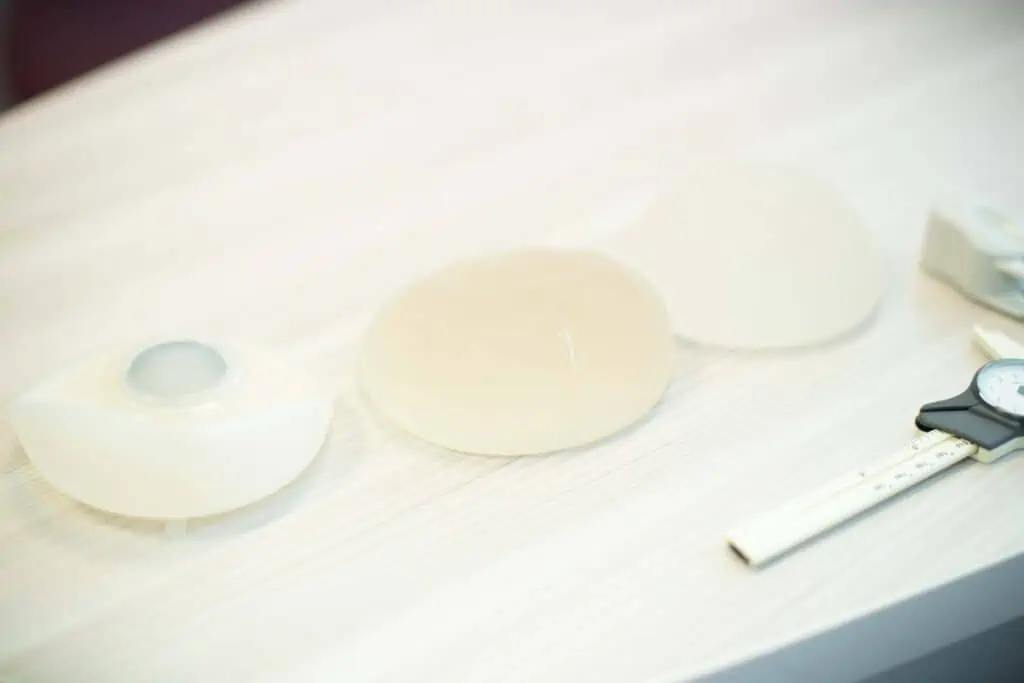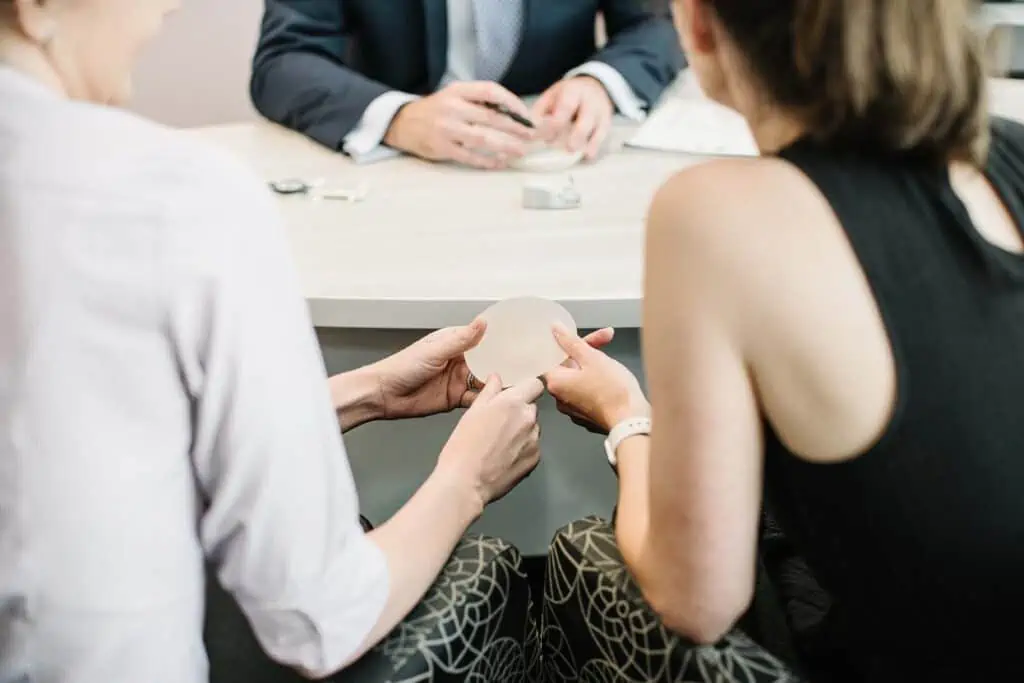Breast reconstruction is performed after a mastectomy. The aim is to replace the breast tissue that is removed to restore or “re-create” the shape of the breast. This can be done at the same time as a mastectomy or at any time after the procedure.
The uptake of breast reconstruction in Australia has been relatively low compared to other countries like the USA and UK. Less than 10% of Australian of women who are suitable candidates for reconstruction will have one after their mastectomy. Breast surgeons trained in oncoplastic and reconstructive breast surgery techniques, like Dr Lancashire, hope to change this. He will discuss the options for breast reconstruction with all of his suitable patients having a mastectomy.
The type of reconstruction surgery available to you may vary depending on the kind of other treatments that you may or will require, your expectations, and ultimately the extent of surgery you wish to undertake. Dr Lancashire will not recommend any form of reconstruction that will potentially delay the treatment of your breast cancer.
What are the types of breast reconstruction? Can I choose which type I want?
There are two main types of breast reconstruction – implant-based and autologous (tissue transfer).
1. Implant-based reconstruction
Broadly speaking, this is where a silicone implant is placed under the pectoralis major muscle on the chest wall. This kind of reconstruction usually requires two separate surgeries.
In the first stage, a tissue expander is placed under the muscle. A tissue expander is like an empty implant which is gradually filled with saline or air over a period of weeks to months. You will be required to visit Dr Lancashire’s rooms every few weeks after your surgery to slowly fill the tissue expander. This allows a gradual ‘stretching’ of the space to allow a permanent implant to fit under the muscle. The expansion takes only a few minutes per session. The number of expansions depends on the desired size/volume that is to be achieved.
The next operation (second stage) is usually a few months later, whereby the saline-filled tissue expander is removed and replaced by a permanent, silicone implant.
A small group of women undergoing breast reconstruction may be suitable for implant-based reconstruction with a breast implant without the need for a tissue expander (single stage implant reconstruction). Dr Lancashire will inform you if you are a suitable candidate for this kind of procedure.


2. Autologous (tissue-flap) reconstruction
This type of reconstruction uses a person’s own body fat and muscle to be transferred from the stomach or back to where the breast has been removed. There are a number different types of autologous reconstruction, including TRAM flaps (Transcutaneous Rectus Abdominus Muscle), DIEP flaps (Deep Inferior Epigastric Artery), and Latissimus Dorsi flaps.
Tissue flap reconstructions have the advantage of looking slightly more natural, and fluctuations in body weight will not change the proportion of the breasts to the rest of the body. Not everyone is suitable for this kind of reconstruction and there are significant risks, length of surgery and recovery associated with autologous reconstructive surgery.
Dr Lancashire will explain your reconstructive options and the kind of reconstruction you are suitable for and give you advice and support in making your decision.
Will it look like a ‘normal’ breast or my ‘old breast’?
It is technically challenging to reconstruct a breast that is the same or better than the one you originally had. The aim of reconstruction is to create a ‘breast’ that is cosmetically acceptable to you. It is also possible to alter the non-affected breast to better match the new one (by mastopexy or ‘breast lift’, or by a breast reduction). Dr Lancashire will be able to explain the pros and cons of both types of breast reconstruction and guide and support you through the decision-making process.
Is breast reconstruction the same as breast ‘augmentation’ or ‘enhancement’?
It is important to note that breast reconstruction is not the same as breast augmentation or ‘breast enhancement’. Breast augmentation is a cosmetic procedure designed to increase the size of a woman’s breasts by placing an implant behind the breast tissue. Dr Lancashire does not perform cosmetic breast augmentations but would be happy to recommend a plastic surgeon who does this type of procedure.
Do I need to have my reconstruction straight away?
No. And certainly, not everyone considering breast reconstruction is suitable to have it done at the same time as their mastectomy.
Timing of breast reconstructive surgery can be influenced by the kind of treatments that you require after a mastectomy (for example, radiotherapy and chemotherapy). It may also be determined by the type of reconstruction you want to have.
Reconstructive surgery carries its own risks, and it is important that your cancer treatment is not delayed by any potential complications of reconstructive surgery. Some people are more comfortable with completing their cancer treatment first, having the ability to evaluate what is important to them, and what their needs and expectations are without the cloud of a new cancer diagnosis influencing their decision.
Can a nipple be reconstructed?
Yes. There are several ways to re-create a nipple. It is important to remember that it is unlikely that a reconstructed nipple will have any sensation.
Nipple reconstruction surgery can be done as a separate procedure after your breast reconstruction surgery is complete and the new breast has ‘settled’ into its position. It may be possible to have this done under local anaesthetic. Dr Lancashire can explain when and how it can be done for you.
Medical tattooing is available all over Australia. Although the tattoo is flat on the skin, it may be possible to create a 3D appearance in a skilled artist’s hands. There are also prosthetic nipples available which can be glued onto the skin.
It seems like a lot to take in all at once
The conversations around reconstructive breast surgery are very complex. They also come at a time when people are dealing with a new breast cancer diagnosis. Dr Lancashire will take the time to go through your options for breast reconstruction, and what you can expect if you decide to proceed.
If you think that breast reconstruction is something you might consider, it helps to have read a little bit about it first, so that Dr Lancashire can answer any specific questions you may have at your initial consultation. The Cancer Council of Australia provide a detailed booklet called “Understanding Breast Prostheses and Reconstruction” which you can download and read.

The decision to proceed with breast reconstruction should be well informed and not rushed. It is important to remember that you can always decide to have a reconstruction after you have finished the rest of your breast cancer treatment. Don’t forget that it is also completely acceptable to decide against having a breast reconstruction at all. Dr Lancashire and a breast care nurse can talk you through what breast prostheses are available to place in a bra.


